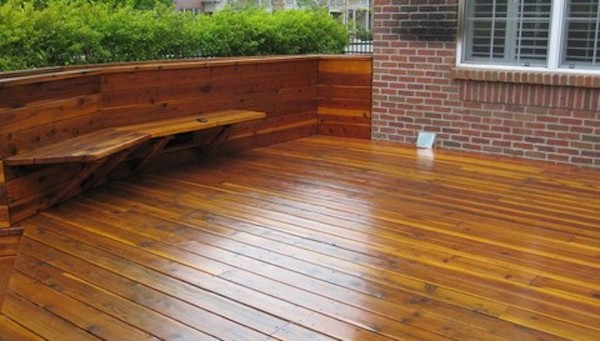
Abrasive: Substance used for wearing away a surface by rubbing.
Acrylic: a synthetic resin used in latex coating.
Adhesion: The strength of a paint or sealant to remain attached to a surface.
Alkalai: A basic, or caustic, chemical substance. Found in fresh cement, concrete, plaster and certain household cleaning products.
Anti-Corrosive Paint: A paint that resists rust and corrosion when applied to metal.
Binder: The component of paint that “binds” the pigment to the film and makes the paint stick to the surface.
Bleaching: The loss of color in a paint, often caused by exposure to sunlight.
Bleeding: when one substance runs into another, often caused when a material bleeds from the substrate into the applied material.
Blistering: The formation of bubbles on the paint surface.
Boxing:
The mixing together of different types of paint to ensure a uniform consistency.
Bristle: the “hairs” on a brush, either natural (hair) or artificial (nylon or polyester).
Burnishing: Shiny areas on a painted surface achieved by rubbing or washing the surface.
Caulking: a semi or slow drying plastic material used to seal joints or fill crevices around windows, chimneys, trim, joints, etc.
Chalking: The formation of a powdery substance on a painted surface.
Checking: A checkerboard pattern that forms on top layer of a paint.
Coating: A paint, stain, varnish, lacquer, or other finish that both protects and provides decoration to the substrate.
Color Retention: The ability of paint to resist fading.
Corrosion Inhibitor: Any material applied in order to prevent the rusting of metals.
Coverage: The area in square feet that a paint will cover.
Cracking: The splitting of a dry paint or varnish, most often the result of aging or movement of the substrate.
Crocodiling: A pattern that appears on paint due to the inability of the paint to bond to the surface below.
Cutting In: Painting a surface next to another surface that must not be painted. For example, painting the frame of a window but not the glass.
Ready to start your painting project?
Find ProsDegreaser: Any material used for removing oils or grease from a substrate.
Durability: The degree to which a coating or sealant can withstand environmental factors.
Eggshell: An interior paint that has a silk-like appearance.
Elasticity: The ability of paint or sealant to expand and contract with the substrate without suffering damage or changes in its appearance.
Enamel: A colored varnish or high gloss paint that is dirt resistant. Often used in kitchens and bathrooms.
Epoxy: A water resistant, clear finish.
Fading: A lightening of paint or stain due to exposure to light, heat or weather.
Feathering: Blending a small area into the surrounding paint or stain.
Filler: Any compound used to fill large cracks in walls that can be sanded when dried.
Film: A layer or coat of paint.
Flaking: Any place where small pieces of the film fall off of the previous coat of paint.
Flat: A painted surface free from a gloss or sheen.
Galvanized: Any metal coated with zinc to protect it from rusting.
Gloss: The shininess or reflectiveness of a paint.
Grain: The appearance of fibers in wood or veneer.
Hardboard: Any smooth or textured panel made of compressed wood.
Hardness: The level of pressure a material will withstand without becoming deformed or scratched.
Hardwood: Term for trees that have broad leaves (like oak, maple, ash, beech and walnut). Does not correlate to the actual hardness of the wood.
Joint: Any place where two building materials come together and leave a gap or space.
Knotting Compound: A clear finish or sealant for floors, for sealing knots.
Latex Paint: Water-based paint made with a latex binder.
Lead: A soft, malleable heavy metal used in the past in paint. Lead based paints are toxic in nature. Especially dangerous where children have contact to lead based painted surfaces.
Levelling: The ability of a paint to form a smooth surface without brush marks.
Linseed Oil: A darker and slower drying oil that can be added to paint. Once prevalent in paint and stains, it now has limited use.
Marbling: A decorative painting technique that imitates the color and figure of marble.
Mineral Spirits: An effective paint thinner, especially when using oil based paints.
Moisture Resistance: The ability of a paint or stain to resis swelling, blistering or other damage caused by moisture.
Nap: The fibers on a paint roller cover.
Ready to start your painting project?
Find ProsOil-Based Paint: Any paint made with a drying oil, such as linseed, soya or tung oil. With oil based paints you must use mineral spirits or paint thinner as the thinning agent.
Opacity: The ability to block out light.
Opaque Stain: An exterior stain that obscures the natural color and grain of wood, but still allows the texture to show through.
Peeling: The detachment of paint from the surface in ribbons or sheets.
Permeable: Allows another material to pass through without effecting the existing material.
Polyurethane Varnish: A clear, alkyd coating.
Primer: A first coat of paint applied in order to inhibit corrosion and provide adhesion between the substrate and subsequent coats of paint.
Roller: A painting tool comprised of a rolling cylinder covered with a natural or synthetic material.
Runs: A blemish caused by excessive flow of the coating. Usually caused by applying too much paint or stain.
Sag: A downward movement of a paint or varnish caused by the application of too much coating, or the gathering off too much material in holes, cracks or joints.
Sealer/Sealant: A liquid coat that seals the surface and prevents it from absorbing paint or varnish. Sealers are often transparent and are used as both primers and as topcoats.
Self-Cleaning: An exterior paint designed to chalk quickly to maintain a clean appearance.
Semi-Transparent Stain: A stain that alters the natural color of the wood while allowing the grain and texture to show through.
Settling: The accumulation of material (usually pigment) at the bottom of a container containing paint or stain.
Sheen: A paint that appears to be matt when viewed near to perpendicular, but appears to be glossy when viewed from other angles.
Shellac: A sealer applied to finish floors that both protects and gives shine to the surface.
Skin: Any film that forms on the surface of a stored paint or sealant.
Softwood: Evergreen trees (spruce, fir and pine). The term does not refer to the hardness of the wood.
Spackling: A filler, often used for filling cracks and holes, that prepares surfaces before painting.
Sponge Painting (Sponging): An interior painting technique in which sponges are used to apply or partially remove a coat of paint.
Spot Prime: The process of applying a primer to areas where paint has been removed or stripped to the original surface.
Stain: Any coating that colors wood without obscuring the grain and/or texture.
Stenciling: The method of applying a design by brushing or sponging paint through a cutout overlay placed on the surface.
Stripping: The process of removing old paint varnishes or stains by using paint remover, sandpaper, or other tools.
Substrate: Any surface to which a paint, stain or sealant is applied.
Ready to start your painting project?
Find ProsTacky: The stage in the drying process when the cover material is sticky and leaves prints when touched.
Thinner: Any liquid used to thin the primary coating. Water and oil are the most common thinners in paint and stains.
Topcoat: the final coat applied.
Touch Up: The process of applying small amounts of paint or stain to cover pre-existing blemishes.
Tung Oil: the Oil of the nut of the tung tree. Generally used in fine wood finishing.
Turpentine: Derived from pine, most often used as a thinner and cleaning solvent.
Undercoat: A coating that provides improved adhesion and/or more gloss and uniformity to a topcoat.
Varnish: A liquid composition that dries transparent after being applied in a thin layer.
Varnish Stain: Any varnish with a transparent color added.
Vehicle: The liquid portion of paint, composed of the thinner and binder.
Water Repellant: Any finish that prevents penetration of water into the substrate.
Water Based Paint: Any paint made with acrylic, vinyl or latex resins, and thinned with water. It dries more quickly than oil-based paint, has a relatively low odor and cleans up easily.
Weather Resistance: The ability of a coating to retain its appearance and integrity in the face of various weather conditions.
Wire Brushing: Cleaning a surface with a wire brush, or wire power brush.
Wood Filler: A product used to fill the grain of wood before undercoats or finishes are applied. Most often used on furniture.
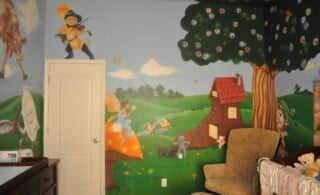 Creating a Kid’s Fantasy World With Themed Murals
Creating a Kid’s Fantasy World With Themed Murals 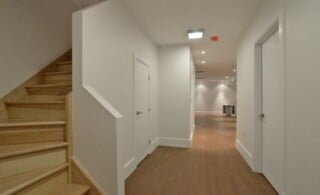 Lead Paint Common Sense
Lead Paint Common Sense 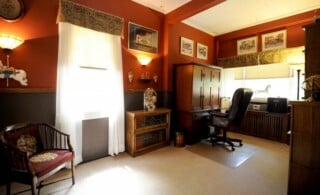 Painting Your Home Happy: How Color Choices Affect Your Mood
Painting Your Home Happy: How Color Choices Affect Your Mood 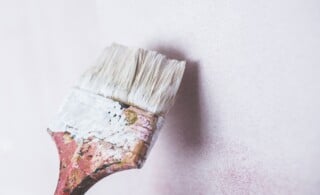 Exterior Painting Techniques
Exterior Painting Techniques 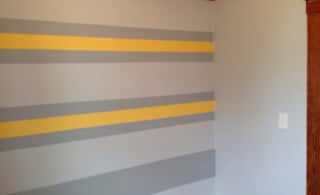 Step by Step Guide to Painting
Step by Step Guide to Painting 

Are You Familiar With This Topic? Share Your Experience.